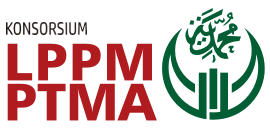Nurse Workload Against Burnout Syndrome in the Emergency Room
DOI:
https://doi.org/10.53017/ujhs.200Keywords:
Nurse Workload, Burnout syndrome, Emergency RoomAbstract
The Emergency Room is a first aid unit to save lives and prevent death. The high number of visits and the unpredictable condition of patients in the emergency department is one of the stressors. Emergency room nurses have a high risk of fatigue due to work demands and workloads that cause fatigue and boredom. The workload received by nurses is closely related to the level of burnout syndrome. To determine the relationship between workload and burnout syndrome of nurses in the Emergency Room. This study is a quantitative study. The research population was nurses in the emergency room at PKU Muhammadiyah Gombong Hospital. The number of samples used were 27 nurses. Nurses with a heavy workload were 78%, while those with severe burnout were 48%. From the results of the Chi Square test, it was found that the P value of 0.020 workload with burnout syndrome had a significant relationship. There is a significant relationship between workload and burnout syndrome of nurses in the Emergency Room.
Downloads
References
T. Mandasari, M. Choiri, and R. A. Sari, “Analisa Beban Kerja Perawat Ugd Menggunakan Maslach Burnout Inventory Dan Modifikasi Heart (Studi Kasus: RSU. X),” Jurnal Rekayasa dan Manajemen Sistem Industri, vol. 2, no. 5, p. 131368, 2014.
H. F. Ratrout and A. M. Hamdan-Mansour, “Factors associated with secondary traumatic stress among emergency nurses: An integrative review,” Open Journal of Nursing, vol. 7, no. 11, pp. 1209–1226, 2017.
D. Nursalam, “Manajemen Keperawatan" Aplikasi dalam Praktik Keperawatan Profesional.” Salemba Medika, 2014.
K. Adhitya and W. Untoro, “Kinerja klinis sebagai prediktor kepuasan pasien dengan moderasi prioritas kegawatan pasien,” Jurnal Economia, vol. 13, no. 2, pp. 155–170, 2016.
A. A. Putri and O. P. Mulyana, “Hubungan antara konflik peran ganda dengan kecenderungan burnout pada perawat RSUD Pamekasan,” Character: Jurnal Penelitian Psikologi., vol. 6, no. 3, 2019.
A. P. Pamungkas and A. R. Sridadi, “Pengaruh Work Overload terhadap Nurse Performance dengan Burnout sebagai Variabel Intervening di Rumah Sakit X Surabaya,” Business and Finance Journal, vol. 5, no. 2, pp. 85–94, 2020.
A. Triyoga and P. A. Maharani, “Job Burnout (Burnout) with Performance by Nurses in Nursing Care Provision,” Jurnal Penelitian STIKES Kediri, vol. 5, no. 2, pp. 167–178, 2012.
N. L. P. D. Y. Sari, “Hubungan beban kerja terhadap burnout syndrome pada perawat pelaksana ruang intermediet RSUP Sanglah,” Jurnal Dunia Kesehatan, vol. 5, no. 2, p. 77069, 2013.
R. Hidayat and E. Sureskiarti, “Hubungan Beban Kerja terhadap Kejenuhan (Burnout) Kerja pada Perawat di Ruang Rawat Inap Rumah Sakit Umum Daerah Inche Abdoel Moeis Samarinda 2019,” Borneo Student Research (BSR), vol. 1, no. 3, pp. 2168–2173, 2020.
F. R. DEWANTI, “Burnout yang Terjadi Pada Perawat Instalasi Gawat Darurat (IGD).” PRODI PSIKOLOGI UNIKA SOEGIJAPRANATA, 2010.
S. Soehartati, “Hubungan Beban Kerja dengan Kepuasan Kerja Perawat Dalam Memberikan Asuhan Keperawatan.” Master Theses. Jakarta: Universitas Indonesia, 2005.
Downloads
Published
How to Cite
Issue
Section
License
Copyright (c) 2022 Endah Setianingsih, Nur Wiji Lestari, Barkah Waladani

This work is licensed under a Creative Commons Attribution-NonCommercial 4.0 International License.





